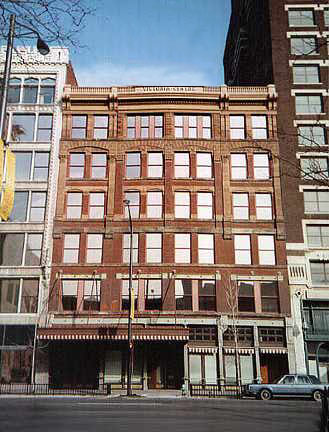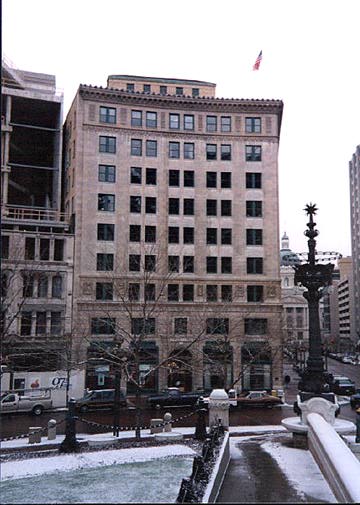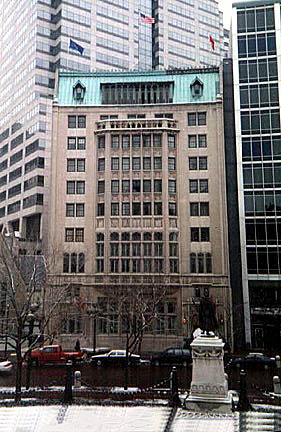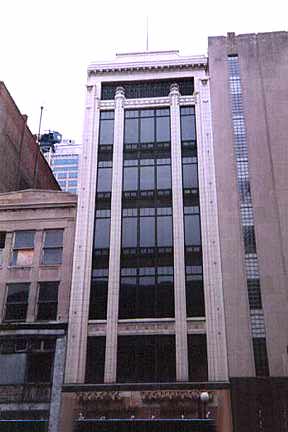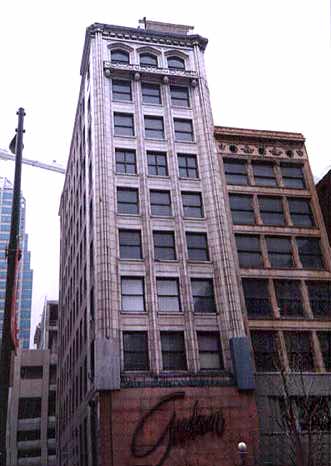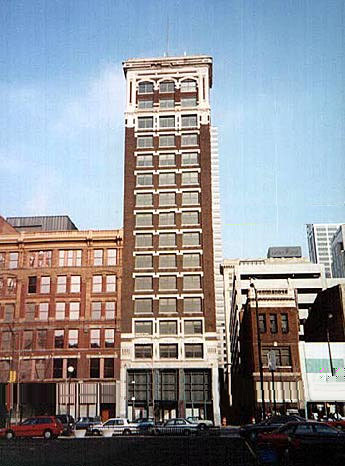Historic Structures of
Indianapolis, Indiana
Commercial Structures
Below are pictures of
larger commercial buildings in Indianapolis. The buildings on this page
show a wide variety of architectural styles.
Indianapolis, in the central part of the state, is the capital
of Indiana and seat of Marion Co. In 1821 the community, now the
largest city in Indiana, was named Indianapolis, and the U.S. engineer
Alexander Ralston who assisted the French architect Pierre L'Enfant in
planning Washington, D.C., was commissioned to lay out the community.
Incorporated as a
city 1847, Indianapolis is a commercial manufacturing, transportation,
and cultural center situated in the productive Corn Belt agricultural
region.
Points of interest
include the home of President Benjamin Harrison; the home of the
Hoosier Poet James Whitcomb Riley; the State Capitol (completed 1888);
Union Station; the Soldiers and Sailors Monument (1902), in Monument
Circle, the heart of the city; Woodruff Place and Lockerbie Square
historic districts; Indiana World War Memorial Plaza, including the
American Legion national headquarters building; and the Gothic-style
Scottish Rite Cathedral.
Numerous cultural
institutions and museums find their home in the city. In addition,
Indianapolis supports modern dance and ballet companies, a symphony
orchestra, an opera company, and several theater groups, including the
Indiana Repertory Theatre.
In the 1960s and '70s
major programs of urban redevelopment were undertaken by the city.
Unfortunately, Indianapolis does not have the most progressive attitude
toward historic preservation in the state, but a growing awareness of
the city's architectural assets has resulted in a thriving
preservationist community.
|
